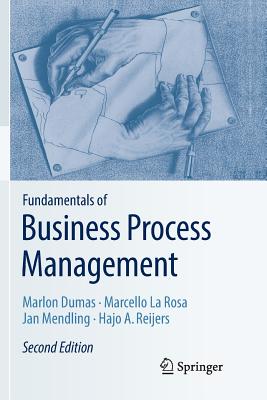Minding the Machines: Preventing Technological Disasters
暫譯: 關注機器:防止技術災難
William M. Evan, Mark Manion
- 出版商: Prentice Hall
- 出版日期: 2002-04-15
- 定價: $1,050
- 售價: 5.0 折 $525
- 語言: 英文
- 頁數: 512
- 裝訂: Hardcover
- ISBN: 0130656461
- ISBN-13: 9780130656469
立即出貨(限量) (庫存=4)
買這商品的人也買了...
-
 $1,009Algorithms in C++ (Hardcover)
$1,009Algorithms in C++ (Hardcover) -
 信號與系統 (Signals & Systems, 2/e)
信號與系統 (Signals & Systems, 2/e)$840$798 -
 C++ Primer, 3/e 中文版
C++ Primer, 3/e 中文版$980$774 -
 802.11 Wireless Networks: The Definitive Guide
802.11 Wireless Networks: The Definitive Guide$1,740$1,653 -
 一手掌握 VCD/DVD 影片製作
一手掌握 VCD/DVD 影片製作$65$65 -
 演算法導論 (Introduction to Algorithms, 2/e)
演算法導論 (Introduction to Algorithms, 2/e)$860$679 -
 Microsoft Project 2002 高手攻略
Microsoft Project 2002 高手攻略$540$427 -
 Cryptography and Network Security Principles and Practices, 3/e
Cryptography and Network Security Principles and Practices, 3/e$1,030$1,009 -
 資料庫系統原理第三版 (Fundamentals of Database Systems, 3/e)
資料庫系統原理第三版 (Fundamentals of Database Systems, 3/e)$760$600 -
 STRUTS 實作手冊(Struts in Action: Building Web Applications with the Leading Java Framework)
STRUTS 實作手冊(Struts in Action: Building Web Applications with the Leading Java Framework)$690$538 -
 重灌 Windows 98/ME/2000/XP
重灌 Windows 98/ME/2000/XP$198$156 -
 Java 2 教學手冊 SDK 1.4版 (Beginning Java 2 SDK 1.4 Edition)
Java 2 教學手冊 SDK 1.4版 (Beginning Java 2 SDK 1.4 Edition)$780$616 -
 資料庫系統概念 (Database System Concepts, 4/e)
資料庫系統概念 (Database System Concepts, 4/e)$750$713 -
 資料探勘 (Data Mining: A Tutorial Based Primer)
資料探勘 (Data Mining: A Tutorial Based Primer)$500$475 -
 知識管理 Knowledge Management
知識管理 Knowledge Management$600$540 -
 詳解 JavaScript & HTML & CSS 語法辭典
詳解 JavaScript & HTML & CSS 語法辭典$490$382 -
 Tomcat 技術手冊 (Tomcat: The Definitive Guide)
Tomcat 技術手冊 (Tomcat: The Definitive Guide)$720$569 -
 鳥哥的 Linux 私房菜─基礎學習篇增訂版
鳥哥的 Linux 私房菜─基礎學習篇增訂版$560$476 -
 Inside VCL-VCL 架構剖析
Inside VCL-VCL 架構剖析$860$679 -
 SCWCD 認證專家應考指南
SCWCD 認證專家應考指南$780$663 -
 軟體工程實務:系統分析、設計與測試 (Software Engineering in Practical)
軟體工程實務:系統分析、設計與測試 (Software Engineering in Practical)$420$328 -
 C++ 程式設計
C++ 程式設計$650$514 -
 Eclipse 實作手冊─活用 Java 整合開發環境 (Eclipse in Action: A Guide for the Java Developer)
Eclipse 實作手冊─活用 Java 整合開發環境 (Eclipse in Action: A Guide for the Java Developer)$450$351 -
 視覺化 UML 設計開發實務
視覺化 UML 設計開發實務$650$514 -
 透視 ASP.NET, 2/e
透視 ASP.NET, 2/e$650$585
相關主題
商品描述
Why do technological disasters occur -- and how can we prevent them?
- A systematic analysis of technological risk -- and how to minimize it.
- More than 30 case studies of technological disaster, from Challenger to Bhopal: analysis and lessons learned.
- Identifying the role of corporations, the legal system, engineering schools, professionals, and individual citizens in preventing technological disaster.
Technological disasters can impact every area of a corporation's infrastructure, not to mention its reputation and bottom line. This book explores today's best strategies -- organizational, professional, political and legal -- for reducing the incidence of technological catastrophe and mitigating its vast human cost. Technological breakthroughs have revolutionized our lives, but some of them have also led to catastrophe. In this book, two leading experts in technological risk assessment and mitigation analyze nearly three dozen disasters -- from Chernobyl to Challenger, the Bhopal gas leak to the Exxon Valdez oil spill. They present lessons learned and preventive strategies for all four leading causes of disaster: technical design, human factors, organizational system factors, and socio-cultural factors. They also identify appropriate preventive roles for every participant in technological systems, from corporations to individual citizens. For everyone concerned with the risks of technological disaster: educated laypeople, corporate executives, R&D professionals, practicing engineers and scientists, regulators, lawyers, policymakers, and many others.
Table of Contents
List of
Tables.
List of Figures.
Preface.
Invitation to Our Readers.
Acknowledgments.
I. INTRODUCTION.
1. Technological Disasters: An Overview.
2. Natural and Human-Made
Disasters.
II. THE PREVALENCE OF TECHNOLOGICAL DISASTERS.
3. The Year 2000 (Y2K) Debacle: An Ironic Failure of Information
Technology.
4. Theories of Technological Disasters.
5. The Root Causes
of Technological Disasters.
III. TECHNOLOGICAL DISASTERS SINCE THE INDUSTRIAL REVOLUTION.
6. Three Industrial Revolutions and Beyond.
7. A Matrix of
Technological Disasters.
IV. ANALYSIS OF CASE STUDIES OF TECHNOLOGICAL DISASTERS.
8. Twelve Exemplary Case Studies of Technological Disasters.
9.
Lessons Learned From the Case Studies of Technological Disasters.
V. STRATEGIC RESPONSES TO TECHNOLOGICAL DISASTERS.
10. The Responsibilities of Engineers and Scientists.
11. The Role of
Corporations in the Management of Technological Disasters.
12. The Role of
the Legal System in Technology Policy Decisions.
13. Assessing the Risks of
Technology.
14. Technology Decisions and the Democratic Process.
Name
Index.
Subject Index.
List of Tables
商品描述(中文翻譯)
為什麼會發生技術災難——我們該如何防止它們?
- 對技術風險的系統性分析——以及如何將其最小化。
- 超過30個技術災難的案例研究,從挑戰者號到博帕爾:分析與教訓。
- 確定企業、法律系統、工程學校、專業人士和個別公民在防止技術災難中的角色。
技術災難可能影響企業基礎設施的每一個領域,更不用說其聲譽和底線。本書探討當今最佳的策略——組織、專業、政治和法律——以減少技術災難的發生率並減輕其巨大的社會成本。技術突破已經徹底改變了我們的生活,但其中一些也導致了災難。在本書中,兩位技術風險評估和緩解的領先專家分析了近三十個災難——從切爾諾貝爾到挑戰者號,從博帕爾氣體洩漏到埃克森瓦爾迪茲石油洩漏。他們提出了針對四大災難原因的教訓和預防策略:技術設計、人為因素、組織系統因素和社會文化因素。他們還確定了技術系統中每個參與者的適當預防角色,從企業到個別公民。對於所有關心技術災難風險的人士:受過教育的外行人、企業高管、研發專業人士、在職工程師和科學家、監管者、律師、政策制定者以及其他許多人。
目錄
- 表格清單。
- 圖表清單。
- 前言。
- 致讀者的邀請。
- 致謝。
I. 引言。
1. 技術災難:概述。
2. 自然災害與人為災害。
II. 技術災難的普遍性。
3. 2000年(Y2K)災難:信息技術的諷刺失敗。
4. 技術災難的理論。
5. 技術災難的根本原因。
III. 工業革命以來的技術災難。
6. 三次工業革命及其後。
7. 技術災難的矩陣。
IV. 技術災難案例研究分析。
8. 十二個典範的技術災難案例研究。
9. 從技術災難案例研究中學到的教訓。
V. 對技術災難的戰略應對。
10. 工程師和科學家的責任。
11. 企業在技術災難管理中的角色。
12. 法律系統在技術政策決策中的角色。
13. 評估技術風險。
14. 技術決策與民主過程。
- 名字索引。
- 主題索引。
- 表格清單。































